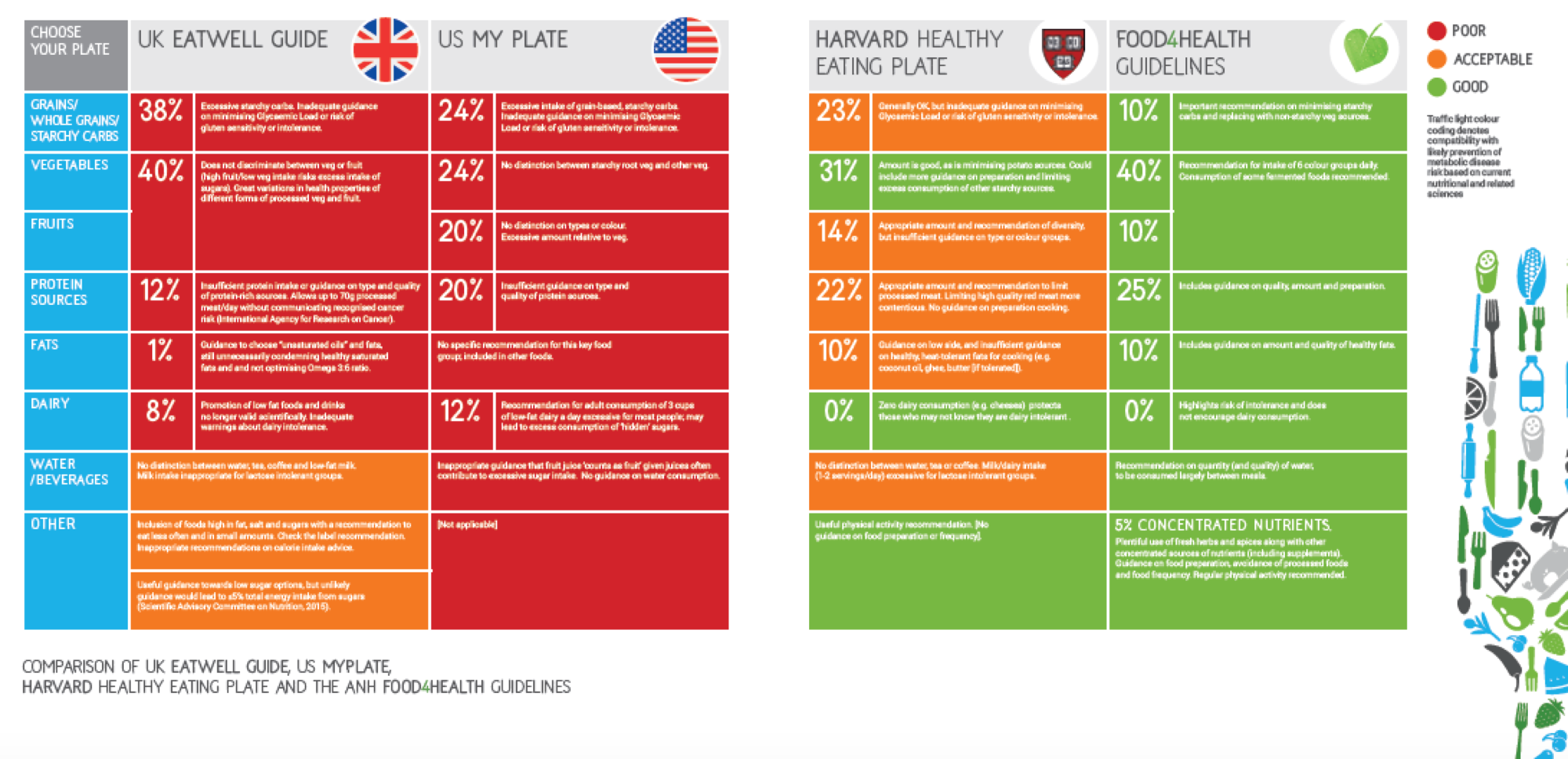Nearly everyone now agrees that what we eat has a profound effect on our health. But there isn’t a lot of agreement on what’s best to eat, when and how, or even how much. And governments are often still pushing low fat, despite the scientific foundations that propped up that fallacy for some 3 decades having now largely been rendered unserviceable.
Today we release an updated 4 ‘plate’ comparison, seen through a lens of contemporary nutritional science and functional medicine practice. The plates, guides or guidelines represent two government guidelines (from the UK and US governments), the Harvard Healthy Eating Plate and our own Food4Health guidelines.
In April 2015, we published a 4-way shootout from the same sources. Since this time, there have been some significant — although not fundamental — changes in the UK plate, now called the Eatwell guide. We have also just redesigned our own guidance.
To mark these two updates, and provide our supporters, practitioners and citizens with current versions, we present today an update of the 4-plate comparison. Next week, we’ll be providing an expanded and segmented reference list, including hyperlinks to sources, supporting our Food4Health guide.
We sincerely hope this and related resources will help more people to eat more healthily and benefit from science that has not been distorted by Big Food interests. Please share widely.
Download PDF of comparison table.
Find out more about Food4Health and Food4Kids guidelines.
See also the Healthy Eating Guidelines resource in our Practitioners' area.








Comments
your voice counts
There are currently no comments on this post.
Your voice counts
We welcome your comments and are very interested in your point of view, but we ask that you keep them relevant to the article, that they be civil and without commercial links. All comments are moderated prior to being published. We reserve the right to edit or not publish comments that we consider abusive or offensive.
There is extra content here from a third party provider. You will be unable to see this content unless you agree to allow Content Cookies. Cookie Preferences